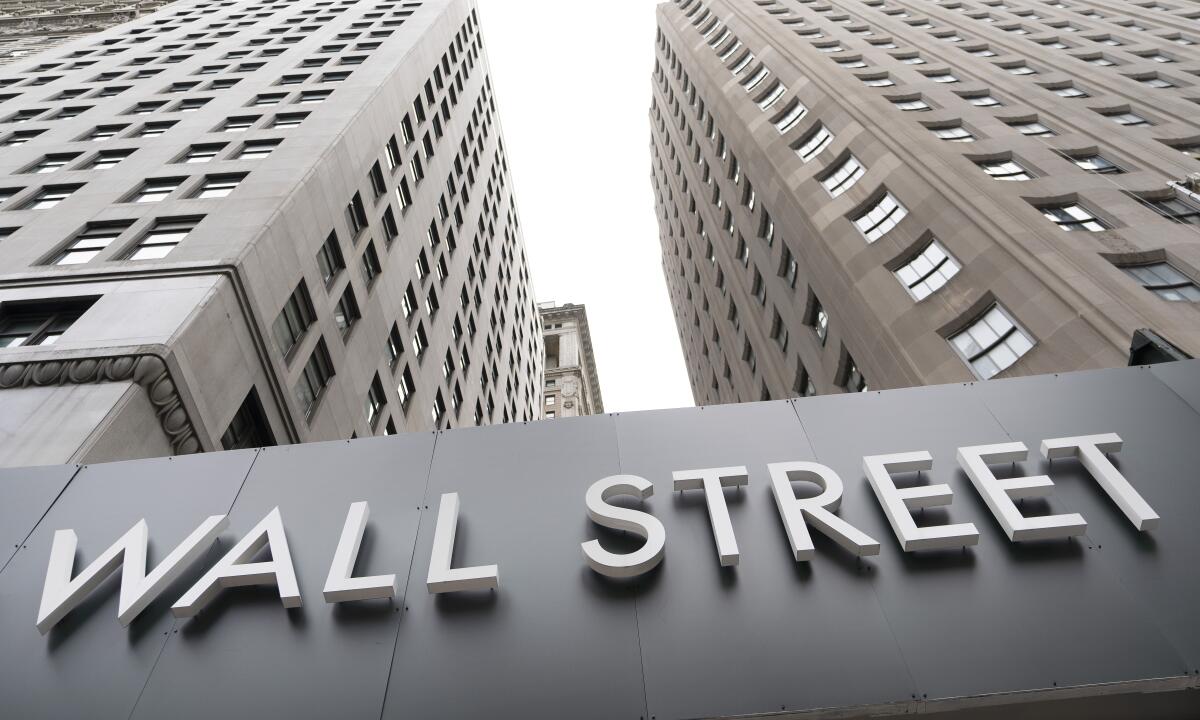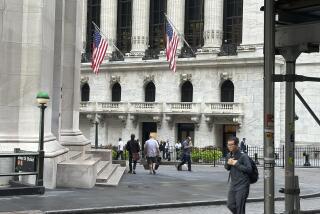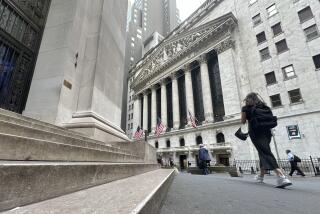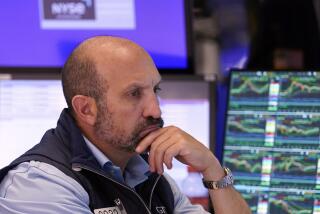Stocks end lower in choppy trading, on pace for weekly loss

- Share via
A choppy day of trading ended Wednesday with a broad slide for stocks as Wall Street closed the books on a rocky August that started off strong but wound up leaving the market deeper in the red for the year.
The Standard & Poor’s 500 index fell 0.8%, extending its losing streak to a fourth day. The benchmark index ended the month with a 4.2.% loss after surging 9.1% in July.
The Dow Jones industrial average fell 0.9%, while the Nasdaq composite slid 0.6%. The major stock indexes are on pace for weekly losses.
Technology stocks and big retailers were among the heaviest weights on the market. Only communications stocks eked out a slight gain. Smaller-company stocks also fell, pulling the Russell 2000 index 0.6% lower.
The French owner is selling all the Westfield malls in the U.S., with Westfield Santa Anita in Arcadia one of the highest-profile properties.
The latest pullback for stocks came as Treasury yields rose broadly. The yield on the 10-year Treasury, which influences interest rates on mortgages and other consumer loans, rose to 3.17% from 3.11% late Tuesday.
Bond yields have been rising along with expectations for higher interest rates, which the Federal Reserve has been increasing in a bid to squash the highest inflation in decades.
“You have the bond market now taking the Fed seriously,” said Willie Delwiche, investment strategist at All Star Charts. “And it’s not that stocks can’t overcome that, but so far they haven’t overcome that.”
The last time stocks mounted a big rally was in July and early August, when bond yields came off their highs as expectations for higher rates eased.
“If the underlying trend in stocks is lower, then higher bond yields weigh on that,” Delwiche said.
The S&P 500 fell 31.16 points to 3,955. The index is now down 17% this year.
The Nasdaq dropped 66.93 points to 11,816.20, while the Dow gave up 280.44 points to close at 31,510.43. The Russell 2000 fell 11.48 points to 1,844.12.
Stocks got off to a solid start in early August, continuing a July rally. Investors were encouraged to see signs that inflation, although still high, was leveling off. That fueled optimism on Wall Street that the Federal Reserve might be able to ease back on raising interest rates, its main weapon in its fight to bring inflation down. Those gains followed a weak first half of the year, during which the S&P 500 dropped 20% from its most recent high and entered a bear market.
That optimism faded by mid-August as the central bank signaled it would continue raising rates and keep them high as long as necessary to tame the hottest inflation in four decades. On Friday, Chair Jerome H. Powell underscored the Fed’s intention in a speech at the central bank’s annual symposium.
Wall Street is worried that the Fed could hit the brakes too hard on an already slowing economy and veer it into a recession. Higher interest rates also hurt investment prices, especially for pricier stocks such as technology companies.
Traders are now trying to get a better sense of how far and how quickly the Fed’s rate hikes will go, beginning with the central bank’s upcoming interest rate policy meeting Sept. 20-21. The Fed has already raised interest rates four times this year and is expected to raise short-term rates by another 0.75 percentage points at its September meeting, according to CME Group.
Investors have been closely watching economic data for any additional signs that the economy is slowing down or that inflation may be cooling or at least holding at its current level. Businesses and consumers have been hit hard by rising prices on a wide variety of things, including food and clothing, but recent declines in gasoline prices have provided some relief.
Strong U.S. employment data have helped fuel expectations of more interest rate hikes. The Labor Department reported Tuesday that there were two jobs for every unemployed person in July, giving ammunition to Fed officials who argue that the economy can tolerate more rate hikes to tame inflation that is at multi-decade highs.
On Wednesday, payroll processor ADP said its latest monthly survey of hiring by private U.S. companies showed payrolls increased by 132,000, well below the 275,000 economists expected, according to FactSet.
The ADP survey comes ahead of employment reports from the Labor Department this week: applications for unemployment benefits on Thursday and the August jobs report Friday. Analysts expect both to show a robust labor market.
Technology stocks and big retailers were among the heaviest weights on the market Wednesday. Chipmaker Nvidia fell 2.4% and Best Buy slid 5.6%. Energy companies fell as the price of U.S. crude oil dropped 2.3%. Occidental Petroleum slipped 1.4%.
Those losses kept gains in communications stocks and elsewhere in the market in check.
Bed Bath & Beyond sank 21.3% after announcing a major restructuring and a stock sale, while Snap, the operator of the Snapchat messaging app, jumped 8.7% after announcing it will lay off 20% of its workforce.
More to Read
Inside the business of entertainment
The Wide Shot brings you news, analysis and insights on everything from streaming wars to production — and what it all means for the future.
You may occasionally receive promotional content from the Los Angeles Times.











